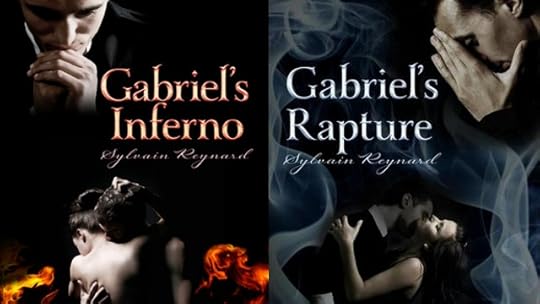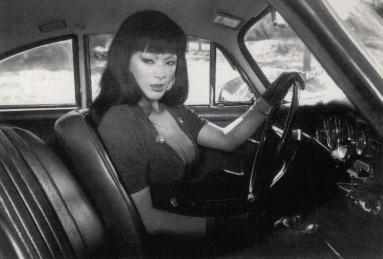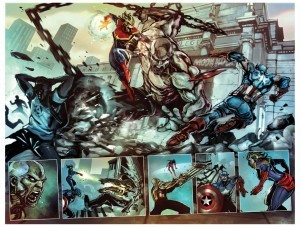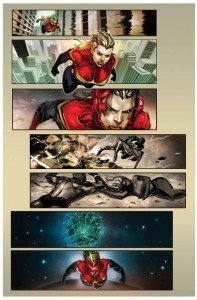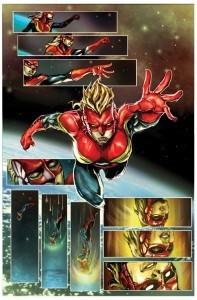Magen Cubed's Blog, page 34
August 17, 2012
Full disclosure: A deeper look at Captain Marvel
When you’re reviewing a series on an issue-by-issue basis, it can be difficult to look at the overall series and judge it on its merits and intentions. I’m just getting into comic reviewing on a public basis right now, so this is a bit of learning curve for me. (I will be reviewing more titles in the fall, when various Marvel titles roll back to #1. Don’t worry: The big boys will be going under the microscope, too.) I chose to start this section of my blog with Captain Marvel for several reasons, the first being that I’ve been looking forward to this book since it was first announced. It has been my gateway back into reading comics on a monthly basis, a way back into the life I grew up with as a kid. I also wanted to read this book because I love Carol and want to support female-led titles; not because they feature women, but because they feature women just as interesting as their male counterparts.
Now, that said, this is a title that I’ve been a little critical of (but not unfairly, I don’t think). It is a young book still finding its readership in a highly competitive market, and it has a lot of hurdles to overcome. It’s a little easy to look at the bright covers, and artwork purposefully reminiscent of feminist iconography, and write this book off as a gimmick. But with just a cursory glance at the interior, this book already proves to be so much more than that. Kelley Sue DeConnick’s stories are heartfelt and Dexter Soy’s art is bold and energetic, commanding your attention. It’s a book about action and adventure, superheroes and sci-fi; it’s also a quiet, introspective book that asks a lot of questions of its hero. Two issues in I feel it is headed in a good direction, just not a direction all fans will appreciate.
Captain Marvel, like Carol Danvers herself, is looking into the past to find a foundation for the future. It’s the story of a woman who has struggled with her identity and her own place in Marvel’s pantheon of heroes, going through changes in costumes, code-names and powers more than a lot of her contemporaries. In DeConnick’s words, Carol is a “crackerjack pilot [who] races to prove [her] dead daddy wrong.” She’s out to prove a lot — to herself, above all else — and find her footing in the world, not just as a hero but as a person. So this is a book about letting go of the past, but also about remembering where you come from. Carol is the sum of her challenges and triumphs, not just the product of her hardships. This book wants to remind us of that, and does it in very quiet, powerful ways.
We see Carol in the warm company of friends, like Tracy and Steve Rogers. We see her in battle, fearless and in control. We see her as a pilot, in her element in Helen’s T6, eager to take risks. We see her questioning her place in the world, unsure of her mantle, her right to the name Captain Marvel. We see her change and grow in subtle strides. It’s only the second issue in, and, no, this is not a typical superhero book. A lot of people may not like that, but I do. So if I’m critical of this book, it’s because I want so badly for it to do well. It’s already sold out of its first issue, and that’s exciting. With any luck, it will find a good readership at the end of this time-travel arc and carry on to tell other, broader stories.
This is a bold chapter in the mythology of an amazing character, and, fingers crossed, I’m looking forward to reading more.
August 15, 2012
Comic review: Captain Marvel #2
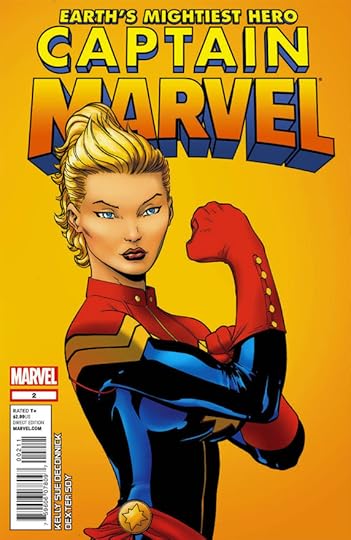
After last month’s quiet and introspective introduction, Captain Marvel #2 picks up the pace with a time-traveling adventure. Not everybody is going to love it, as fans — not unlike Carol herself — continue to adjust to Carol’s new mantle and look, but the series is now off to a good start. Kelley Sue DeConnick delivers an enjoyable story with plenty of action, and Dexter Soy’s art continues to pack a stylish punch.
The story opens as Carol and her friend Tracy pack up for Helen Cobb’s private hangar in Friendswood, Texas, to dust off Helen’s old T6 plane. Eager to prove that her hero had broken a long-contested altitude record back in her time, Carol sets out to repeat Helen’s feat historical flight in the same plane. Carol’s admiration for the high-flying Helen really shines through here, which, while important to Carol, hasn’t quite made itself immediately relevant to the readers yet. Everything seems to be going fine until, climbing past the record altitude, the T6 develops a severe icing problem and stalls, plunging Carol toward the ground. Unable to pull out of the tailspin, Carol seemingly crashes, waking up in parts unknown with no wreckage in sight. Immediately Carol encounters trouble as she’s ambushed by a band of Japanese soldiers who take her back to their camp, where she discovers she’s been catapulted back into the 1940s. Unfortunately, as Carol admits, she can’t seem to remember the Avengers’ time travel protocols.
As Carol tries to figure out how she’s ended up here, the war camp is raided by The Banshee Squadron, a band of all-female soldiers. It’s kind of nice to see this group of very tough-looking military women in action, all of whom seem to mean business but sadly lack much explanation or development. After the skirmish Carol follows them back to base only to be attacked by a Prowler, an ominous-looking alien vessel. Clearly, something is hinky in this timeline as the issue closes on an aerial fight between Captain Marvel and this strange, seemingly familiar adversary.
There are some good moments in this issue, such as the conversation between Carol and Tracy in the beginning, and Carol’s narration has some genuinely entertaining lines. DeConnick’s dialogue has a bit improved since last issue, with only a few hiccups here and there that read as weird or out of place. Overall this arc has a lot going on without much explanation as of yet, which is hopefully coming in the next few issues. I personally find the set-up interesting, if a little typical for a superhero comic, but I’m willing to stick it out to see where this goes. I’m also warming up to Carol’s new look, with help from Soy’s bold and energetic artwork. Now if we could only get away from Ed McGuinness’ covers, which so far prove bland compared to the interior art.
Worth a read: I’m a little hesitant to recommend this to anyone who isn’t already a hardcore Carol Danvers fan, sadly. If you’re on the fence, maybe wait another issue or two to see what happens with this title. I am enjoying it, though, so take that as you will.
August 14, 2012
New short fiction, Flesh and Blood
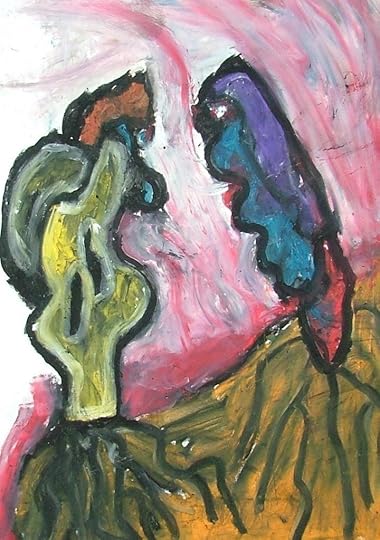
Out this week from The Squawk Back is a new-old story from me: About a man who finds himself at odds with the external world in favor of an existence of his own design, fashioned out of blood and flesh and a gilded cage for everything he doesn’t understand. First written in 2010, while I was pounding out the original draft of my novel, this is a story that I’ve hacked at with a cleaver for the last two years, trying to carve something palpable from the barrage of blood, dead birds and secret gardens. Now, a bit of luck and a bit of creative editing, maybe that’s actually happened.
Hannes was a butcher with tiger stripes on his arms, kept under his cuffs and sleeves in quiet reflection scored out healed over and scored again. He enjoyed the practice for the same reason he butchered animals, for the blood. Blood was the end result of his blade slicing through flesh and raw animal alike, into the sides of cows and pigs on hooks in the yawning freezer of his father’s rickety butcher shop. It ran truer and redder than most all things, only to turn brown on the wet concrete beneath him and become lost as pink in the whiteness of his smock. Blood always changed, but only in ways that he recognized.
August 7, 2012
Things you don’t say to a girl in a superhero t-shirt

Are you serious?
Did your boyfriend buy that for you?
Like you even read comics.
What, you’re one of those girls, right?
Isn’t that a little desperate?
Do you even know who that is?
You’re just wearing that because you saw the movie.
Girls like you ruin it for the rest of us.
You’re a fan? Prove it.
You’re just wearing that for attention.
A girl in a superhero t-shirt isn’t a target for your antagonism. A girl in a superhero t-shirt isn’t there to justify herself (or anybody else) to you. It doesn’t matter if she’s a lifetime fan, or a new reader, or just saw the movie, or only bought the shirt because it was cute. A girl in a superhero t-shirt doesn’t owe you anything.
Signed,
This girl in a superhero t-shirt.
August 6, 2012
Costume inspiration: Cosplaying for the rest of us

Marshall Lee and Fionna the Human. From Comics Alliance.com
Cosplay has been a topic that’s been coming up a lot in conversation for the last few weeks, both online and in real life. (For the three of you still unfamiliar with cosplay and unable to use Google, I’ll save you five minutes by giving you the Wikipedia page link right now. You’re welcome.) Granted, I’m not exactly an expert on the art of costume play or the large and varied community behind it. In my time I have only briefly dabbled in cosplay in my numerous adventures to Comic Cons and movie premieres. Luckily for all of us, few photos from these excursions exist, so precious opportunities for Tumblr fame and/or blackmail are pretty far and few in between.

My Star Trek XI version of Nurse Chapel.
Friends are always asking me, “Who should I cosplay as?” My response is usually, “I don’t know. Whoever the hell you want?” Because, honestly, whoever the hell you want usually works for me. Starfleet medical officer? Ten-year-old adventurer? Captain America? I got this. But people always give me these strange, pleading looks. “But I can’t do that!” they say, “I’m dark-skinned!” Or “I’m not a boy!” Or “I’m not skinny!” Or “I have tattoos and piercings!” Then, it becomes an entirely different situation, and I find myself wracking my brain for an answer.
The thing is, these issues never occurred to me. My dress size, my piercings or gender never even crossed my mind when picking a costume. At 2009 San Diego Comic Con I was the only 5’4, 200lb Flapjack there, and you know what? People loved that. People gave me hugs and high-fives. I got off lucky, really, and I realize that now. Plus-sized cosplayers, cosplayers of color, and cosplayers with visible tattoos and piercings often receive nothing but criticism — and sometimes far worse — from within the community for “deviating” from their character. Apparently putting on tights and a wig is tantamount to signing a social contract to embody everything about a fictional character, right down to your skin color and your skeletal structure. To do anything else — such as cosplay while fat, non-Caucasian, or any other established no-no — opens yourself up to name-calling and abuse. News to me, right?
After a lot of thought on this very delicate subject, I decided my answer to my friends is still a resounding, “Do whatever the hell you want.” I wish I could come up with something better than that, but, sadly, I am currently unable to become a 6’1″ Japanese woman with a perfect body and purple eyes, or magically grow a literal set of balls. In that case, I’m going to just continue dressing up like superheroes and Starfleet officers, and to hell with everybody else. So, in the spirit of inspiration, self-love, and picking fights on the internet, I present to you examples of cosplay for the rest of us. Fat, thin, boy, girl, tattooed — just put your tights on and go out there.
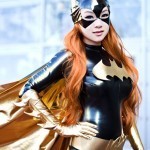
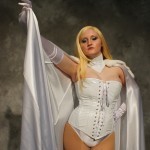
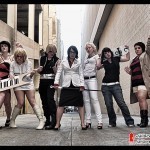
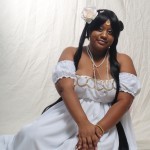

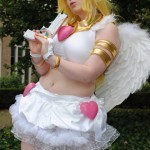
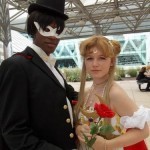
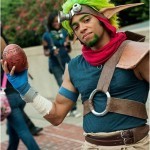
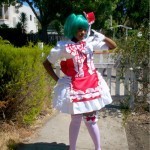
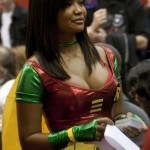
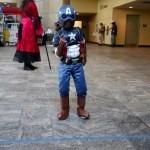

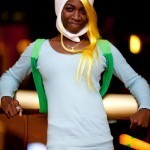
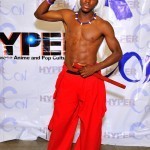
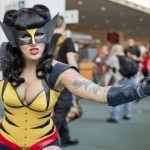
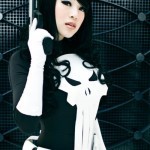
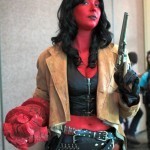


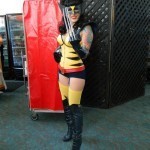
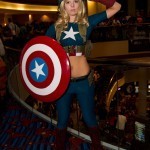
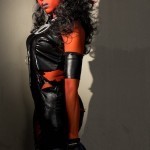

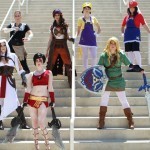
All images are property of their individual owners, and also the first guy to comment with “But fat chicks can’t cosplay!” gets thrown out the airlock. Oh, and Rule 63 Rockabilly Wolverine gets two mentions because that woman is a gem.
August 2, 2012
Fanfiction as literature: Publishing derivative work
I’ll make this brief: I love fanfiction. I do. I’ve even written more than my fair share of it. As a tool for young or struggling writers, I think its value can’t be emphasized enough. It can give you the flight-time you need to sort out your own ideas before you tackle original work, while giving you an opportunity to get your stories into the hands of strangers all over the internet for feedback. Writing fanfiction is how I taught myself to write, just me and a word processor, struggling to balance authentic characterization and tone with my own interpretation of the source material. In fact, I’ve recently spoken to Colette Bennett of CNN.com’s GeekOut about the importance of fanfiction in my own writing experience. So, while George R.R. Martin and Anne Rice can come fight me on this any day, I’m all about fanfiction.
Because — and here’s the catch — it’s fun, not-for-profit, and nobody gets hurt. Right? Right. I’m not going to make money on my 20,000 word magnum opus on that cult TV show you’ve never heard of, or that 15K Avengers fanfic about Captain America’s torrid affair with Iron Man, or that novel-length Star Trek story about Captain Christopher Pike’s adventures in ending Orion slavery. (I haven’t actually written these things, but, you know, I could have.) My writing it will not impact the livelihoods of the copyright holders in any way, shape or form, because nobody’s going to forsake the source material for my rinky-dink, free-to-read derivative story. That’s how fanfiction has slipped under the radar of the legal system, and out from the crosshairs of very angry authors over the years.
Now? Well, now I’m not so sure.
Author Sylvain Reynard has recently signed a seven-figure deal with Penguin Group’s Berkley imprint, for two new books, Gabriel’s Inferno and Gabriel’s Rapture. That sounds cool, right? Good for him, getting out of the trenches to make a living on his writing. That’s what we all want for ourselves, and we shouldn’t crap another author for his successes. Except this book series started off as Twilight fanfiction. Just as with 50 Shades of Grey by E.L. James, publishers are now knowingly paying a lot of money for derivative works based on well-established properties. Working on the (apparently correct) assumption that fans of Twilight will drop money on any book that looks like their beloved series, publishing houses are now lapping up anything that will offer the same success, even fanfiction. Maybe it’s not exactly stealing money out of Stephanie Meyers’ mouth, since she’s already cashes her hefty royalty checks, but it still smells wrong.
Why? Because this completely dilutes the pool for everybody else out there. This tells hopeful authors that:
A) If you want to make a million dollars, write a fanfic based on a popular story, change the names to protect the innocent, and send it to the nearest publisher.
B) Publishers don’t care about original, engaging work. They just want more of the same.
Neither are entirely true, but these assumptions aren’t exactly baseless, either. And if that’s the case, what’s the point of trying to do anything for yourself? What’s the point of trying to publish anything at all, if all that gets rewarded is The Same Old Thing? I’m not even going to debate whether these books are any good, or the fuzzy gray area of “artistic borrowing,” or why mainstream publishing sucks, or how Jorge Luis Borges spent years writing sequels and fanfiction about Don Quixote and why it was cool when he did it, because that’s not the point. What I’m bothered by is the standard it sets up for everybody else.
If the publishing industry is so hell-bent on making money on the latest trend, there’s no room for growth or change within the market. Maybe it was a tiny stab of petulant jealousy, but I was seriously depressed when I heard about 50 Shades of Grey, and even more so after Gabriel’s Inferno. Hey, I would like a million dollars. Everybody wants to get paid for their work, and if the only thing that people are getting paid for is derivative fanfiction porn, why not get on the boat? I even thought about dusting off that 15k Avengers fic (that I totally didn’t write, cough cough) and giving it a once-over because, hey, Avengers are in right now, right? Who wouldn’t want to read about the Harlequin romance of Roger Stephens by a brilliant playboy philanthropist? I’d down for that.
[image error]
The cover of my forth-coming novel. By derlaine.tumblr.com
Okay, so. Maybe not.
I just want to see how far down the rabbit hole the publishing industry is willing to go with this. In five or ten year’s time, will we all just be reading licensed fanfiction? Is that the only thing that’s going to be picked up anymore? Are the rest of us relegated to the outskirts of independent publishing, hoping for a few pennies to rub together while the E.L. Jameses and Sylvain Reynards make the big bucks? We’ll just have to wait and see.
July 31, 2012
The future of Star Trek, the reboot, and beyond

Where is Star Trek headed in 2013? Your guess is as good as mine.
If you’re a fan of Star Trek, and you’re at all interested about the upcoming twelfth film currently in the works from J.J. Abrams and Bad Robot, you know as well as I do that news on that front has been pretty slim. As they had in previous years, the cast and crew of the forthcoming movie had little to no presence at this year’s San Diego Comic Con, and have been extremely tight-lipped about details. This is not new to anyone familiar with Abrams & Co. and their dedication to secrecy around projects, who are all busy promoting their other work — Abrams has Revolution, while Damon Lindelof has spent the summer talking people down from Ridley Scott’s Prometheus, and writers Kurtzman and Orci are currently writing, well, everything.
We’ve had a lot of casting news, with the new movie pulling in cult powerhouses like Peter Weller and Noel Clarke of Doctor Who fame. Benedict Cumberbatch has been brought on as the unnamed villain, as rumors about his role, said by many to be that of classic nemesis Khan Noonien Singh, and other major story elements have been flying around almost completely unchecked. How much of this is due to excited chatter, lazy journalism or deliberate disinformation from the creative team itself remains to be seen. (Simon Pegg has come out time and again to try to put the Khan rumors to rest, but it appears that nobody’s listening.)
What little has been leaked involved Karl Urban sort-of-kind-of-maybe letting slip the name of Benedict Cumberbatch’s character — who has been theorized to be everybody from Khan to Kirk’s friend turned villain Gary Mitchell to Trelane, which would make me claw my eyes out — a comment that, according to Urban, landed him in a lot of hot water. This tidbit was immediately contradicted and quashed by Roberto Orci, who makes Gary Mitchell out to be the Schrödinger’s cat of the Star Trek universe, both in the movie and not in the movie at the same time. The leak-that-wasn’t only served to cause more confusion and debate among fans, already a little tired of the back and forth, as theories rage on in comment threads and discussion hubs across the web. With the writers and producers limiting their communication with the media to largely Trek-related news sites, and the cast and crew under gag-order not to give anything away, fans don’t have much to go on, in any event.
Of the Comic Con silence, co-writer/producer Damon Lindelof said earlier this year,
Our feeling is, that if we can get something together that is worthy of showing on that timetable, then we will most certainly show it. But, if it is sub-par or not ready or requires more post-production, then nobody at Comic Con is going to want to hear us say “hey this is very temporary, but we wanted to show you something.” We need to put our best foot forward. We just wrapped principal photography as you know and Comic Con is in mid July so it is an aggressive timetable. If we are going to go we are going to go big or not go at all.
So far, this is what we know for sure:
The movie comes out May 2013.
Benedict Cumberbatch is in it.
Stuff…happens.
Khan isn’t the villain but that’s not going to stop people from talking about it.
For some reason, they decided to make another G.I. Joe movie before Star Trek.
I can’t really blame a creative team for wanting to go big or go home in terms of promoting an upcoming film. However, after watching Marvel Studios whip up a frenzy at this year’s SDCC as they unveiled their next five films, with little more than a trailer, some logos and Ant-Man test footage, it raises a few questions for fans. The fans of contemporary franchises have come to expect a steady stream of news and spoilers from both the convention floor and the red carpet, and when that stream is cut off, there tends to be a lot of complaining on the internet. That said, the natives are getting a bit restless with this one, and I can definitely see why.
It’s already been three years since the last movie came out in May 2009, while the twelfth film lingered in production will-they-won’t-they as the creative team moved on to a slew of other film and television projects. What little news that has come out about this movie has been steeped in rumors and a lot of disinformation, with plenty of big casting announcements with little actual concrete details. In the meantime, fans have been teased with the possibility of a new Star Trek series, but with interest in an ongoing Star Trek show still uncertain, any show is still several years out in development and production.
While a little secrecy never hurt an audience, and good things are usually worth the wait, this is a franchise that has suffered numerous missteps in the last several decades. From show cancellations to poorly planned and executed movie sequels (Anybody remember Sybok? Nope? Good.), whenever it gets quiet, fans get worried. And right now, arguing on messages boards and in article comment threads, fans appear split pretty evenly on whether or not this back-and-forth will help or hurt the film. Nobody can say for sure. What is clear, however, is that Star Trek is a franchise in transition. Not just in terms of creative control, from Roddenberry’s utopian vision to Abram’s slick new canon, but in terms of tone and accessibility, as well.
2009′s Star Trek reboot opened a new alternate timeline with younger characters and a more energetic pace. It served as a good jumping-off point to new fans who feel a bit intimidated by the five shows (give or take a very silly cartoon), ten previous films, and numerous novelizations and comic book tie-ins of the previous canon. It remains to be seen whether the next movie can maintain the excitement and fun of this timeline, and just how far the Powers That Be want to go in this new direction. After such a long hiatus, will fans still be interested in the adventures of this younger, fresher Enterprise crew? Is there still room for an ongoing Star Trek series, and if so, which reality? Can a new show stand on its own without just rehashing the current film franchise? Only time will tell.
Personally? I’ll be there with bells on. And by bells, I mean my Nurse Chapel costume. (Obviously.)
July 27, 2012
Why Comic Books Matter
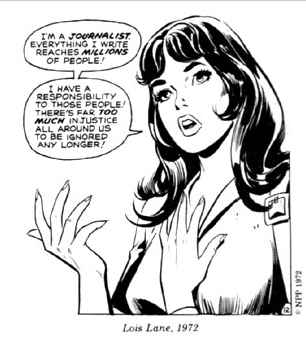 Whenever there’s a public backlash against comic books, especially when it comes to issues such as Islamophobia, racism or sexism (something I’ve blogged a fair deal about myself), it appears that the default response to critics is to simply Lighten up. Don’t worry about it. Get over it. They’re just comics. It’s easy to say that, and give detractors a pat on the head and send them on their way. The fact is that’s a cop-out, maybe the biggest cop-out both the industry and its defenders have ever put forth. To say that comics are just comics undermines everything that makes them relevant and meaningful, and ultimately short-sells both the product and its consumers. And here’s why:
Whenever there’s a public backlash against comic books, especially when it comes to issues such as Islamophobia, racism or sexism (something I’ve blogged a fair deal about myself), it appears that the default response to critics is to simply Lighten up. Don’t worry about it. Get over it. They’re just comics. It’s easy to say that, and give detractors a pat on the head and send them on their way. The fact is that’s a cop-out, maybe the biggest cop-out both the industry and its defenders have ever put forth. To say that comics are just comics undermines everything that makes them relevant and meaningful, and ultimately short-sells both the product and its consumers. And here’s why:
Comic books carry the mythology of their time. They are an illustrated representation of the time-frame they were written in, reflecting the social climate, cultural archetypes, and artistic trends of the day. The best and worst of an era can be found in its comics, and reading an old comic is like looking backwards in time, even when it takes us places we don’t necessarily want to visit again. What do we want our comics to say about us in ten- or twenty-years’ time?
Comic books are unique in that they are one of the truest, purest ways you can put a story to paper. Anybody can do it, whether you can draw or not. They’re not constrained by Hollywood special effects budgets or network demands. Children write and draw their own comics in pencil and crayon, making their own high-flying adventures. Whether or not they grow up to become well-known creators, that creative outlet is still present and important, and something anybody can enjoy.
Comics go beyond the page. They are now a multi-billion dollar industry, complete with movies, television shows, merchandise and collectibles. They are so easily accessible now, to billions of people all over the world, from the t-shirt on your back to the vitamins in your bathroom cabinet. From the grocery store to the convention hall, the movie theater to Saturday morning cartoons, this is the most relevant comics have been in recent history.
Comic books are also unique in that they can be handed down from generation to generation. Like a book, a record, a personal heirloom, most of us who read comic books today read them because somebody gave them to us as children. If not as children, then as teenagers or young adults, from friends who wanted to share them with us. Comic books are handed down from others over the span of our lives, and hold a lot of emotional value. There are comic books in my house today that came from my parents and uncles, and will likely be handed down to my brothers’ children whenever that day comes.
Comic books are just as viable and impacting on the culture at large as any film, book, television, show or video game. The ideas being put out, especially in the case of negative connotations towards sex and race, are legitimized by its reinforcement in popular culture. This reflection of frankly bad representations only make them harder to break through and overcome in our everyday lives. For example. writers such as Kelly Sue DeConnick and Captain Marvel, Jeff Parker and Red She Hulk, and of course Gail Simone (which goes without saying) want to break down the taboo of female-led titles and bring more strong female characters to the forefront. That’s a step in the right direction, and but it’s going to take more support from within the industry to make major change happen.
In the face of the tragedy in Aurora, Colorado last week, fourteen comic artists got together to draw and sell art to support the survivors and their families. While one man chose to use the pop culture influence of Batman to commit a heinous crime, artists inspired by the same character chose to do something amazing. This is also just one example of artists and creators using their talent and work to do good, and won’t be the last.
To say that comics are just comics is a complete joke. It undersells everything about comics that make them so important, and gives creators the free-reign to skirt accountability in the work that they produce. If you want to make something, you have to be open to criticism. If you’re not, saying what you made isn’t important doesn’t excuse you. All of that said, this is not to deny the progress that’s been made to produce more inclusive work. We have Miles Morales as Spiderman in Earth 1610, original Green Lantern Alan Scott is gay, Batwoman is a successful title with a strong lesbian lead, Black Widow emerged from this summer’s The Avengers movie looking like the kick-ass hero she always has been, and, hell, Northstar’s wedding was one of the biggest events of the year for Marvel Comics. These titles, characters and portrayals are not perfect, but, again, they are steps in the right direction.
Because comics, whether you like it or not, do matter, and they will matter for generations to come.
July 25, 2012
What Would You Do: Tura Satana
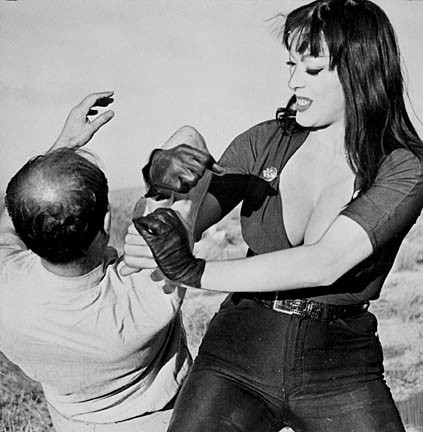
Once in a while, everybody has to give themselves a pep talk. You ask yourself, what would somebody else do in my position? And if you’re drawing a blank, sometimes it helps to look at what other people — historical figures, pop culture icons, personal heroes, whatever floats your boat — have done in their own time. Their accomplishments, their defeats, and even just the weird stuff that they’ve done. On this episode of WWYD, Tura Satana.
Tura was an actress, model, singer and burlesque dancer, most known for her role of Varla in Russ Meyer’s Faster Pussycat! Kill! Kill!, the vicious and deadly leader of girl gang of go-go dancers.
As a child she and her family spent time at the Manzanar Relocation Camp during World War II, before moving to Chicago in the “mafia section of town.”
In her teens she was in a girl gang, protecting young girls and women in her neighborhood.
At the age of nine, she was raped by five men, none of whom were ever prosecuted, and she was sent off to reform school for ‘enticing’ them. “If I could help every woman this has happened to,” she said of the attack, “I would. It is in your spirit to conquer this degradation.”
Her father taught her self-defense, and Tura went on earn a green belt in aikido and a black belt in karate. Over the next several years she tracked down each of her attackers and got her revenge. “I did get even with each and every one of them. It took several years to find them all, but I did and I gave them back what they did to me.”
At thirteen she entered a brief arranged marriage to a seventeen-year-old in Hernandos, Mississippi. After their divorce, she moved to Los Angeles, got a fake ID, and worked as a nude model and singer. At age fifteen she began her burlesque career in Camulet City, Illinois. Of the divorce and her ex: “When I ran into him again, I was an actress and dancer and he was fat and bald.”
She dated Elvis Presley in the 1950s, but the relationship was kept quiet. He proposed to her but she turned him down. According to Tura, when he began seeing Priscilla, he asked her to model her appearance after his ex-girlfriend, until Tura told him to stop it and let Priscilla be herself.
Of her legendary character Varla: “There are a great many similarities between Varla and myself. Varla was an outlet for some of the anger I felt growing up. She was also a statement to women all over the world that you can be a take-charge person and still be sexy. She also showed the women world-wide that women don’t have to be weak, simpering females. They just go after what they want and usually get it.”
Tura was once shot in the stomach by an ex-boyfriend, and suffered a broken back from a car accident.
Aside from television, film and burlesque, she once worked in a hospital, managed a doctor’s office, and was a radio patrol operator for the L.A.P.D.
An obsessed fan once tried to attack her, and failed miserably. “I once had a guy hide in my hotel room closet. After my show, I came in and proceeded to get ready for bed. When I went to hang up my clothes, there he was. He reached to grab me, but I got there first. He went flying across the room and wound up with a broken arm and busted nose and badly twisted leg. The house detective carried him out of my room and then I went to bed.”
Director Quentin Tarantino once said that he would “give up five years of my life” to work with Tura Satana.
July 21, 2012
Comic review: Captain Marvel #1
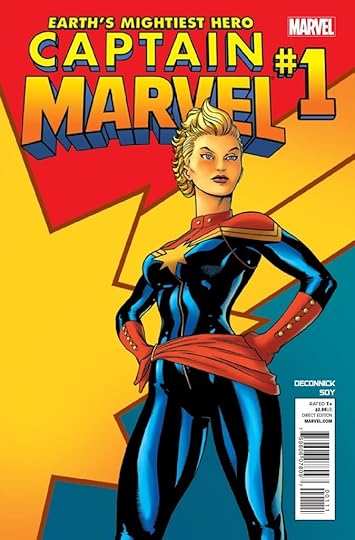
Long anticipated by fans, Captain Marvel #1 by Kelly Sue DeConnick and Dexter Soy begins the ongoing adventures of Carol Danvers as she assumes her title as Captain rather than just Ms. With a new costume, title and a bold style change for the character, this issue courts diehard fans and serves as a jumping-off point for readers who are new to Carol’s story. For this reason, this issue is low on plot, high on exposition. While the story does run thin in places, overall, it serves as a fitting introduction to this new chapter of the character’s life. Then again, that could just be my soft-spot for Carol talking.
The story opens with a nice little brawl between Ms. Marvel, Captain America and Absorbing Man at the Museum of Natural History, where Absorbing Man is attempting to absorb the powers of moon rocks. (Moon rocks are apparently very powerful, or so we’re told.) As a fan of the relationship between Carol and Steve Rogers, reading their familiar banter and closeness put a smile on my face as they work together to beat the ever-living crap out of this bad-guy-of-the-week. Soy’s artwork is bold and energetic, and just a little moody. It stands in sharp contrast to the very bright and exaggerated (and for me, kind of disappointing) cover art we’ve been seeing all year. It’s definitely a big plus in the book, and keeps the reader engaged.
This fight opens to Cap urging Carol to assume the mantle she has avoided up to this point, and publicly taking the title of Captain. Carol is unsure of taking it, out of the memory of the Mar-Vell, the deceased counterpart from whom she took both her powers and her name, Ms. Marvel. With a bit of influence from Spiderman (whom she threatens to vaporize for making fun of her new haircut), Carol begins working through her hesitance to remind herself of why she’s here. DeConnick has a good handle on the dynamics of these characters and uses them well, even if the dialogue suffers a little from time to time. However, her take on Carol feels very natural and convincing, even for those unfamiliar with her story.
The last half of the book briefly examines Carol’s relationship with the recently deceased Helen Cobb, an accomplished pilot that Carol came to emulate. This flashback shows Carol as a young pilot meeting Helen, providing the set-up for the actual story to begin in the next issue. It’s a nice scene, showing the rapport Carol and Helen came to develop, while serving to solidify Carol’s decision to take the mantle for herself once and for all. Overall Captain Marvel #1 is an introspective book, attempting to establish Carol’s new place in the Marvel Universe. It’s a bit of a quiet book, with little real action or true plot driving it, with some fun character interactions and a nice, almost warm sensibility about it in Carol’s internal dialogue.
Fans expecting an adventurous title launch will be disappointed by the somewhat unfocused story and the generalized meta on Carol’s role, over any real exploration of it yet. For a launch it’s not perfect, but I think it’s fitting for the tone DeConnick is trying to strike here: A new suit, a new name, a new story. For now, at least, the future looks bright.
Worth a read: For Carol fans, and anybody who’s interested in this new chapter for Captain Marvel, I recommend it.



